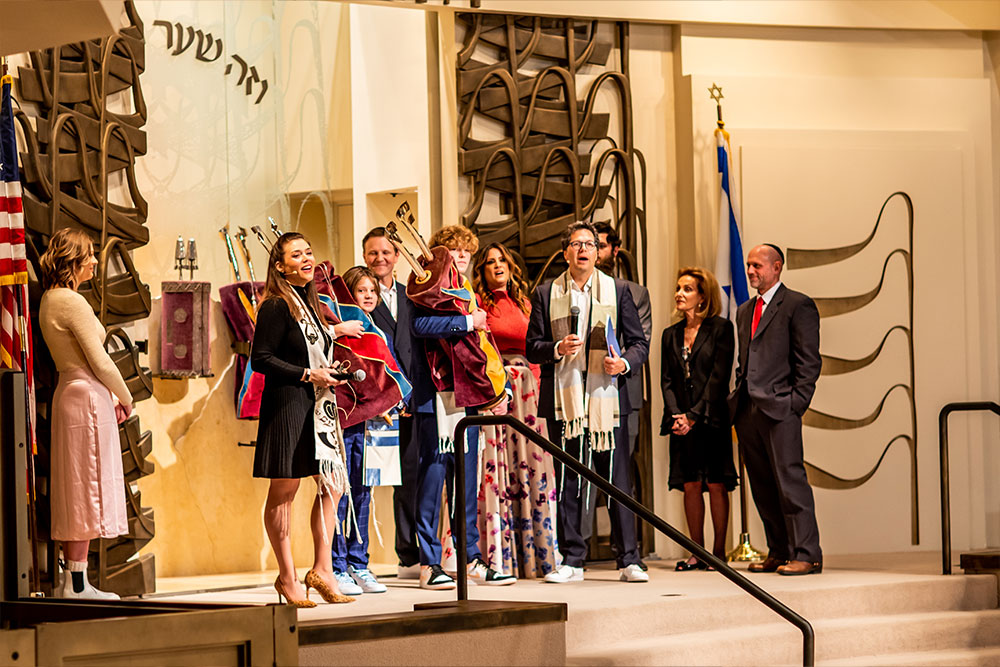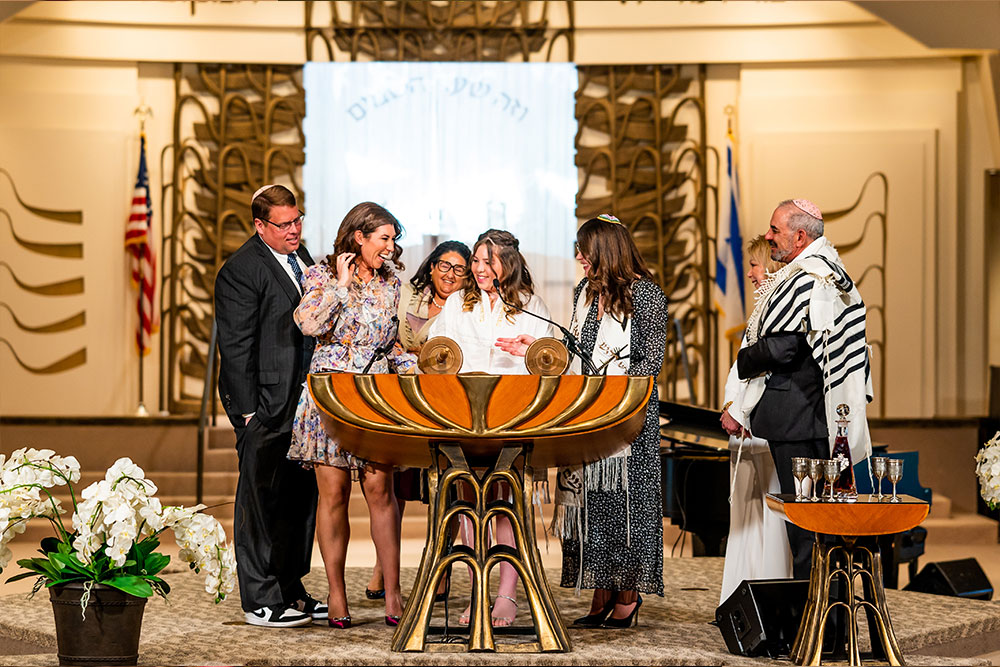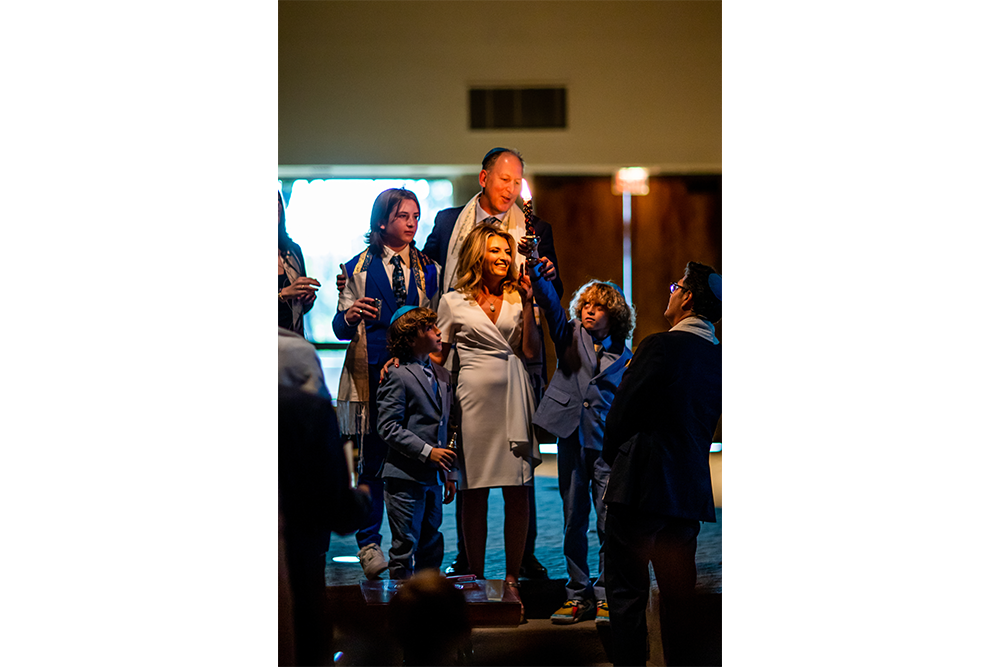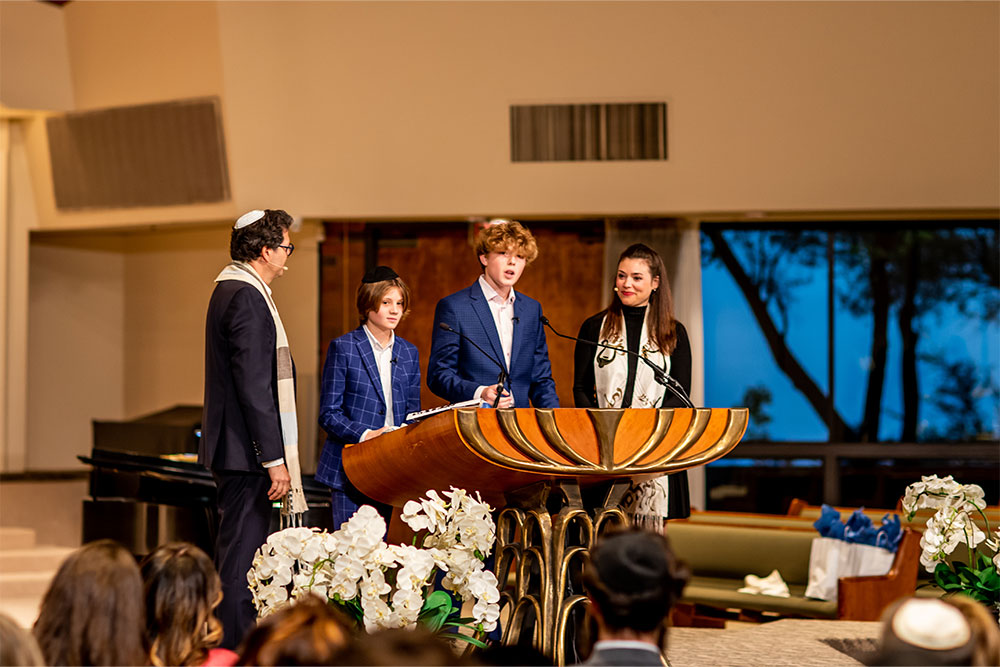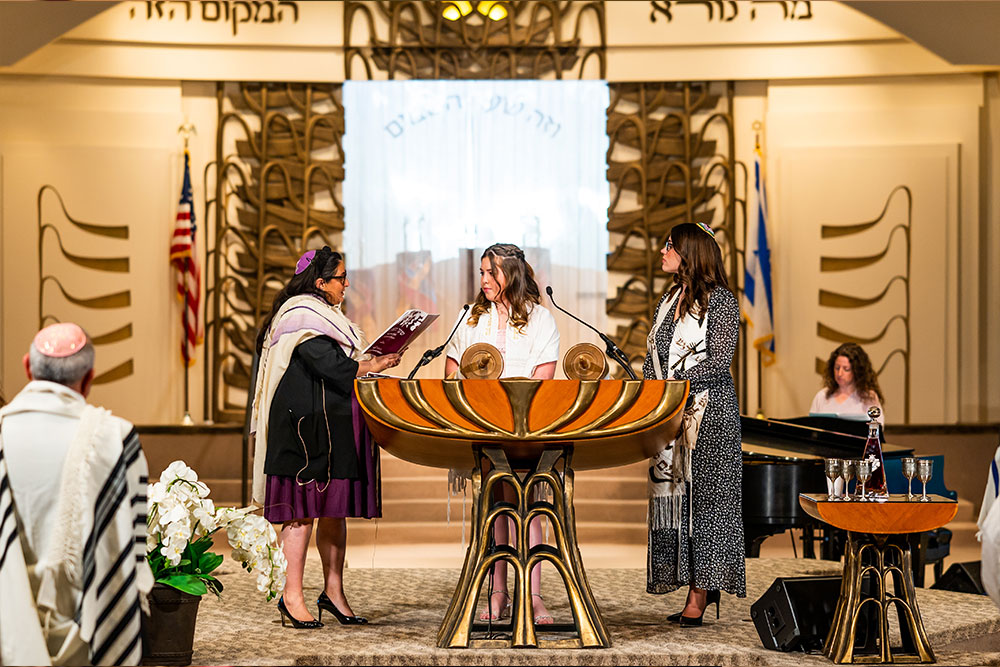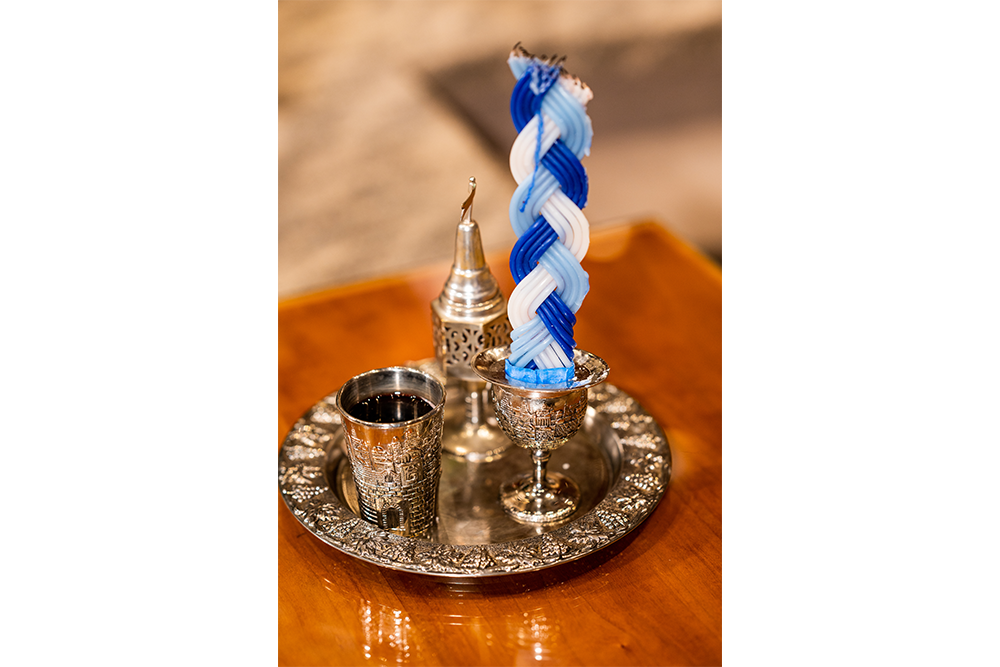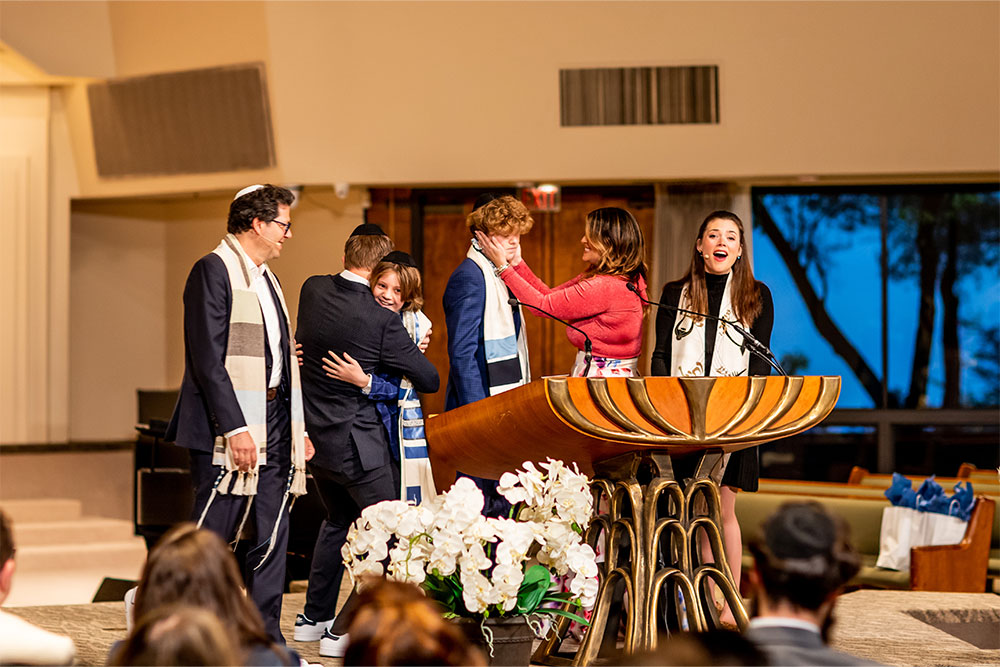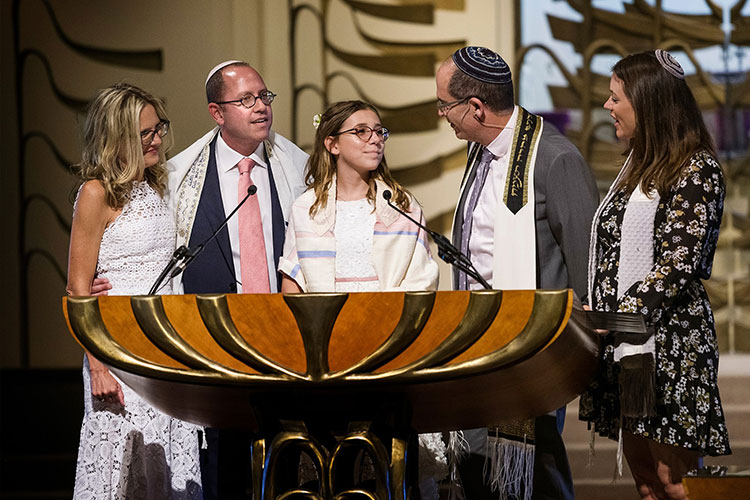
Becoming a B’nai Mitzvah at Stephen Wise
At Wise, the official B’nai Mitzvah Journey begins the year a child turns 10 when families, looking ahead to the day a child becomes a Bar or Bat Mitzvah at 13, choose a date to stand on the bimah. Throughout the next several years leading up to the ritual, B’nai Mitzvah students and their families will enjoy many opportunities to prepare and deepen their understanding of what it means to become a Bar or Bat Mitzvah: meaningful learning for children at Wise School and Wise Religious School, individual and family meetings with the rabbi and cantor, family learning sessions alongside other families preparing for B’nai Mitzvah, and a formal mentoring program all combine to help children and parents make the most of the B’nai Mitzvah journey. For a detailed timeline of the B’nai Mitzvah process, click here.
Children learn to embrace Judaism best when they see their parents, family, and friends embrace Judaism. We encourage families to wholeheartedly embrace those aspects of Jewish communal life that bring them the most meaning, throughout and after the B’nai Mitzvah journey, from our Shabbat and holiday celebrations, lectures and dialogues, tikkun olam, and community events.
A Brief History of the B’nai Mitzvah Ritual
For millennia, Jews became Bar or Bat Mitzvah simply by reaching the age of thirteen, when parents recited a blessing absolving them of responsibility for their children. Although it remains one of the best known coming-of-age ceremonies throughout the world, the Bar or Bat Mitzvah–as we know it today–is a relatively new practice developed by the European and American Jewish communities.
By the seventeenth century, Jewish children had begun to receive an aliyah to recite Torah blessings, to read Torah, and to teach Torah as part of becoming a Bar or Bat Mitzvah, and, soon, children began to lead the entirety of the service. In 1922, Judith Kaplan, daughter of Reconstructionist Rabbi Mordechai Kaplan, celebrated the first recorded Bat Mitzvah in New York, finally introducing young women to this official rite of passage.
As Bar and Bat Mitzvah services continued to evolve, they began to reflect sacred components of Jewish life beyond the study and teaching of Torah, namely: prayer, acts of tikkun olam (repair of the world), and a greater commitment to Jewish community.
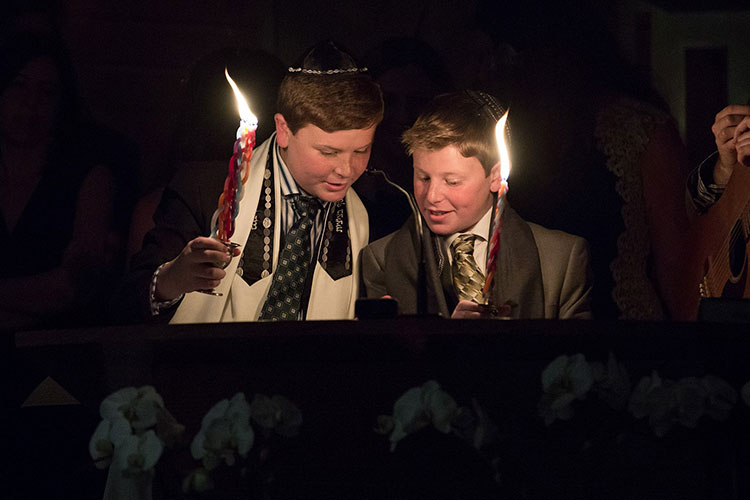
At Stephen Wise Temple, our b’nai mitzvah celebrations honor the richness of Jewish tradition, featuring melodies from Sephardi, Mizrahi, and Ashkenazi modalities. Our students lead the majority of the prayer service, supported by their Rabbi, Cantor, and family members.

